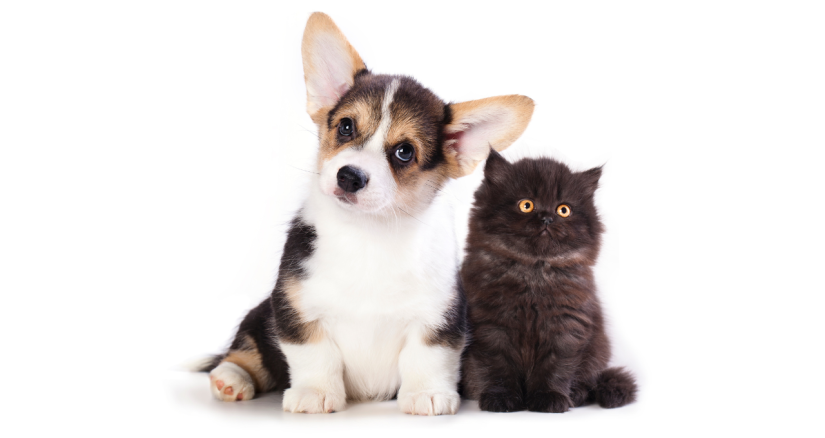
Paws to Health: Exploring the Vital Health Benefits of Spaying and Neutering Your Pet
Introduction
Spaying for female (ovariohysterectomy) and neutering for male (orchiectomy) pets often regarded as routine procedures in responsible pet ownership, offer a multitude of health benefits for both animals and the broader community. The ASPCA estimates that there are approximately 6.3 million companion animals that enter US shelters each year, and of those, 920,000 are euthanized.1 Unfortunately, any fertile animal is at risk of increasing the species’ population. Even when owners have the best intentions, accidents can happen. Beyond controlling the pet population and reducing the burden on shelters, these surgeries play a pivotal role in safeguarding the well-being of our furry companions. By understanding and advocating for the health benefits of spaying and neutering, pet owners can contribute to the overall welfare of their beloved animals and promote responsible pet ownership practices.
Preventing Reproductive Health Issues
For females, spaying can prevent the possibility of a life-threatening uterine infection known as pyometra from occurring. It can reduce the risk of mammary (breast) cancer in dogs to 0.5% if spayed before their first heat cycle, 8% if spayed after their first heat cycle, and 26% if spayed after their second heat cycle.2 Cats spayed before 6 months of age have a 91% reduction risk of mammary cancer.3 This also prevents the possibility of ovarian or uterine tumors since those organs are removed with the traditional spay procedure. Notably, neutering eliminates the risk of testicular cancer and can significantly decrease the risk of a disease called benign prostatic hyperplasia.
Behavioral Wellness and Quality of Life
These procedures can mitigate behavioral issues such as aggression, roaming, and marking territory, fostering a safer and more harmonious environment both within households and in the wider community. For example, removing a male dog or cat's testicles reduces their instinct to breed and thus reduces their roaming and urine-marking behavior associated with attracting and finding a potential mate. This is related directly to the decrease in certain sex hormones that occur from the removal of the reproductive organs.
Lifespan
Spaying and neutering can significantly affect the lifespan of dogs and cats. In male dogs, it can increase lifespan by 13.8% and a staggering 26.3% in females that have been spayed or neutered.4 In a study of cats, the median lifespan of an intact female was 4.68 years, while spayed cats' median lifespan was 10.48 years, with similar numbers for male cats.5This is often attributed to a less “risky” lifestyle of a spayed/neutered animal. With the reduced urge to roam, fewer pets fall victim to vehicular accidents and getting lost. Less desire to fight for territory reduces exposure to injuries and infectious diseases like the feline leukemia virus.
Conclusion
For many pets, the significant advantages that spaying and neutering offer far outweigh any risks. From population control to promoting a longer and happier life these procedures are essential for the well-being of our beloved pets.
While different research is available on when the best time is to spay or neuter pets, and opinions vary on what is best currently; discussing the best option for a particular pet is done by discussing the topic with a veterinarian who can help weigh the pros and cons of each option.
References
- “Pet Statistics | Shelter Intake and Surrender | ASPCA.” ASPCA, https://www.aspca.org/helping-people-pets/shelter-intake-and-surrender/pet-statistics. Accessed 23 Jan. 2024.
- “Mammary Tumors - American College of Veterinary Surgeons.” American College of Veterinary Surgeons, https://www.acvs.org/small-animal/mammary-tumors/. Accessed 6 Feb. 2024.
- Overley, B, et al. 2005.Association between ovariohysterectomy and feline mammary carcinoma. J. Vet. Intern. Med. 19(4):560-563.
- Hoffman, JM, Creevy, KE, Promislow, DEL. 2013. Reproductive capability is associated with lifespan and cause of death in companion dogs. PloS one8(4):e61082.
- Kent, MS, et al. 2022. Longevity and mortality in cats: A single institution necropsy study of 3108 cases (1989–2019). PloS one17(12):e0278199.
Follow us on LinkedIn for the latest updates on all things happening here at BSM Partners.
About the Author
Dr. Katy Miller works as the Director of Veterinary Services at BSM Partners. She earned her veterinary degree at Ross University and completed her clinical year at Louisiana State University. She previously served for 11 years as the Director of Dog and Cat Health and Nutrition for Mud Bay where she earned multiple certifications and specialized in pet food nutrition, prior to which she practiced general and emergency medicine for seven years. She is also a competitive three-day eventer, licensed falconer, and claims only two (Golden and Mini Doxie) of their nine dogs.
This content is the property of BSM Partners. Reproduction or retransmission or repurposing of any portion of this content is expressly prohibited without the approval of BSM Partners and is governed by the terms and conditions explained here.